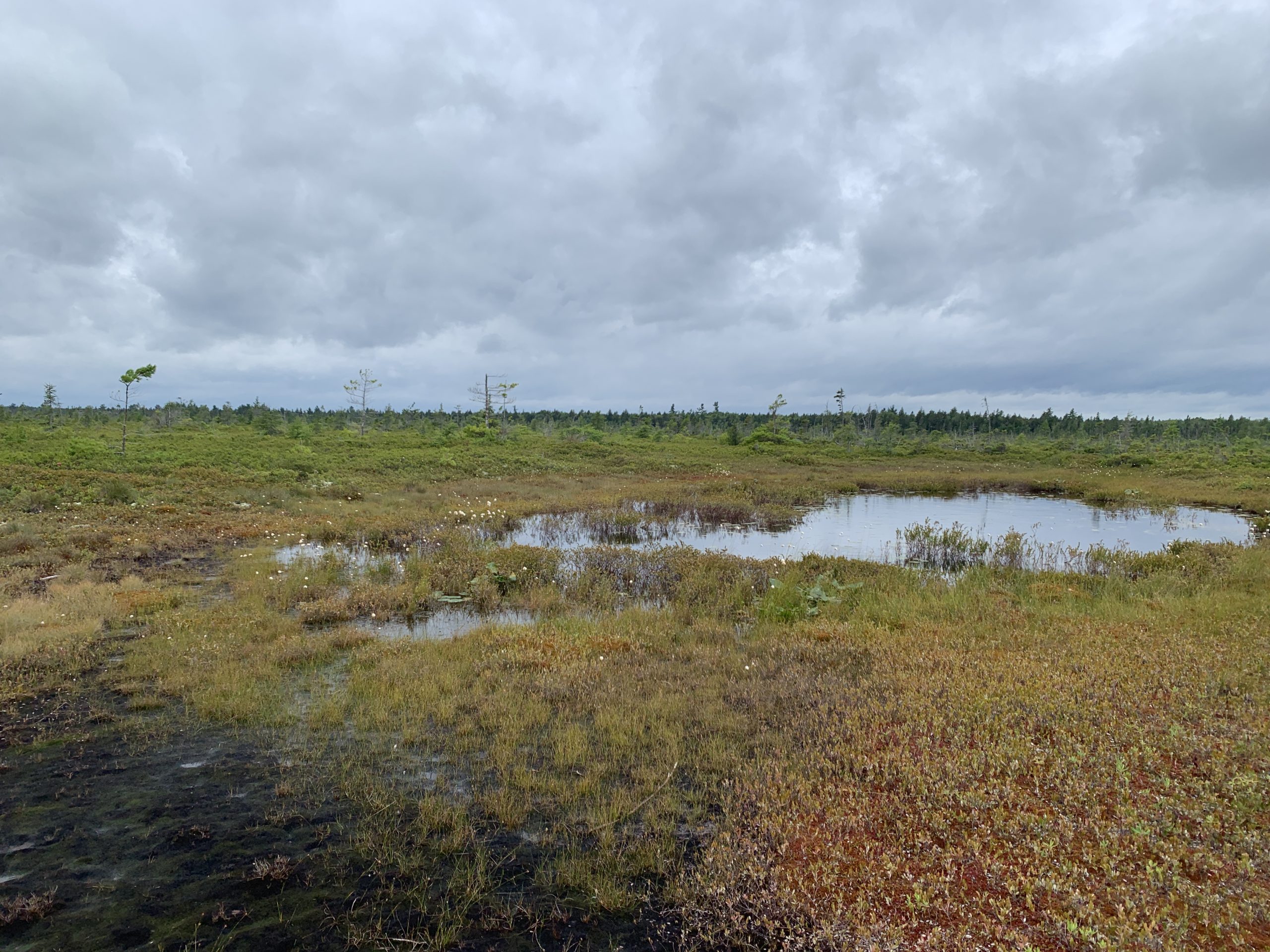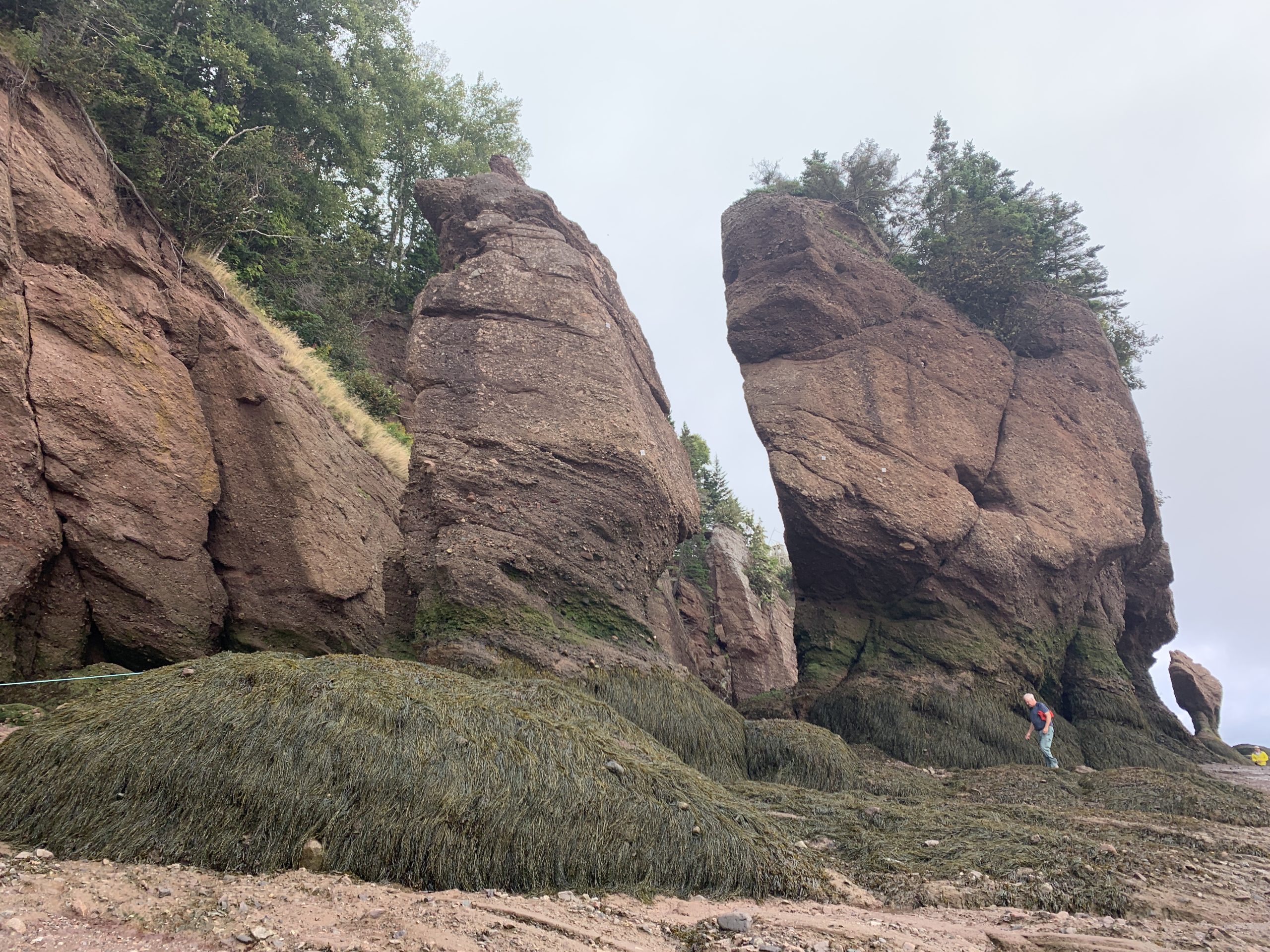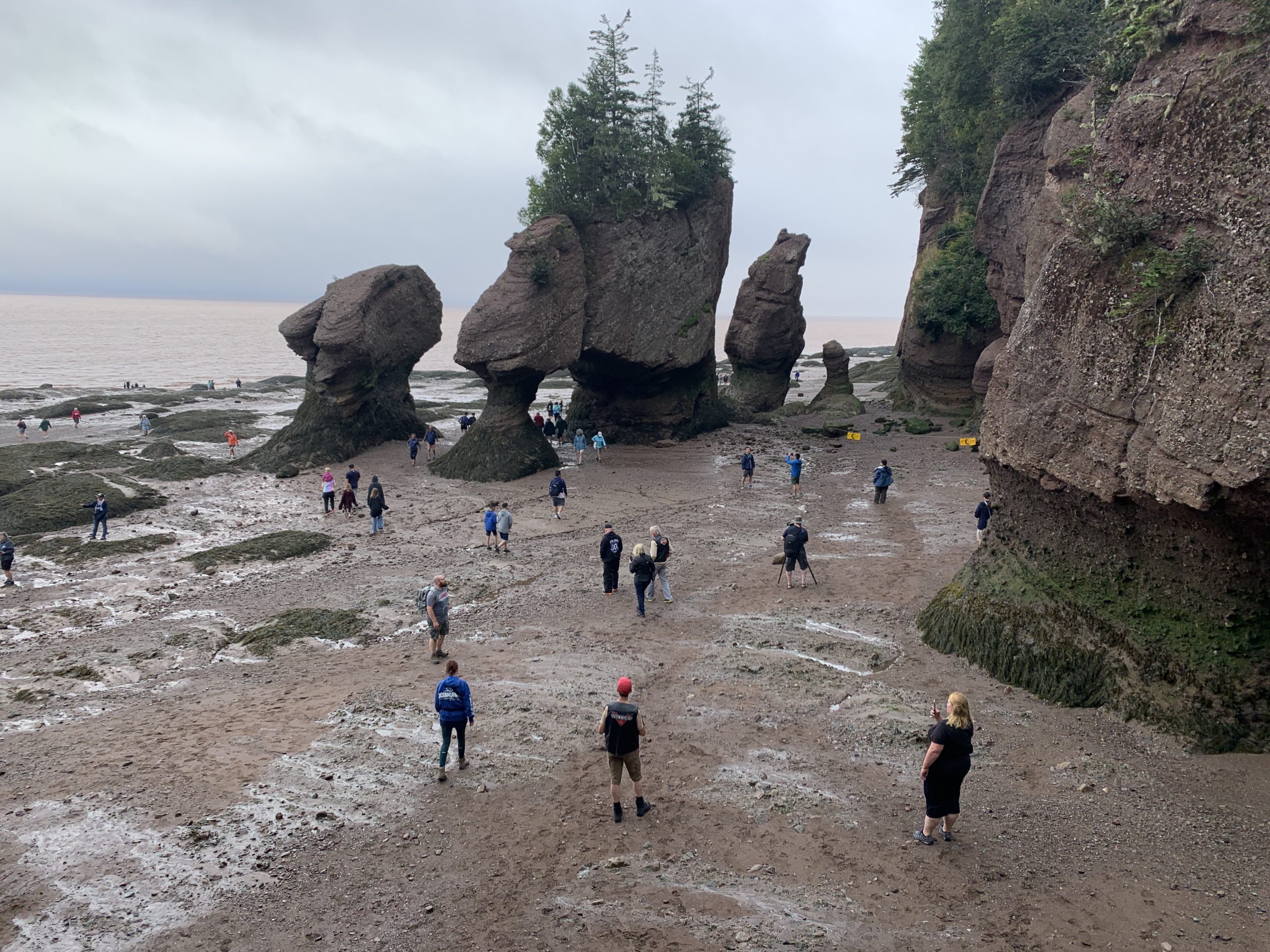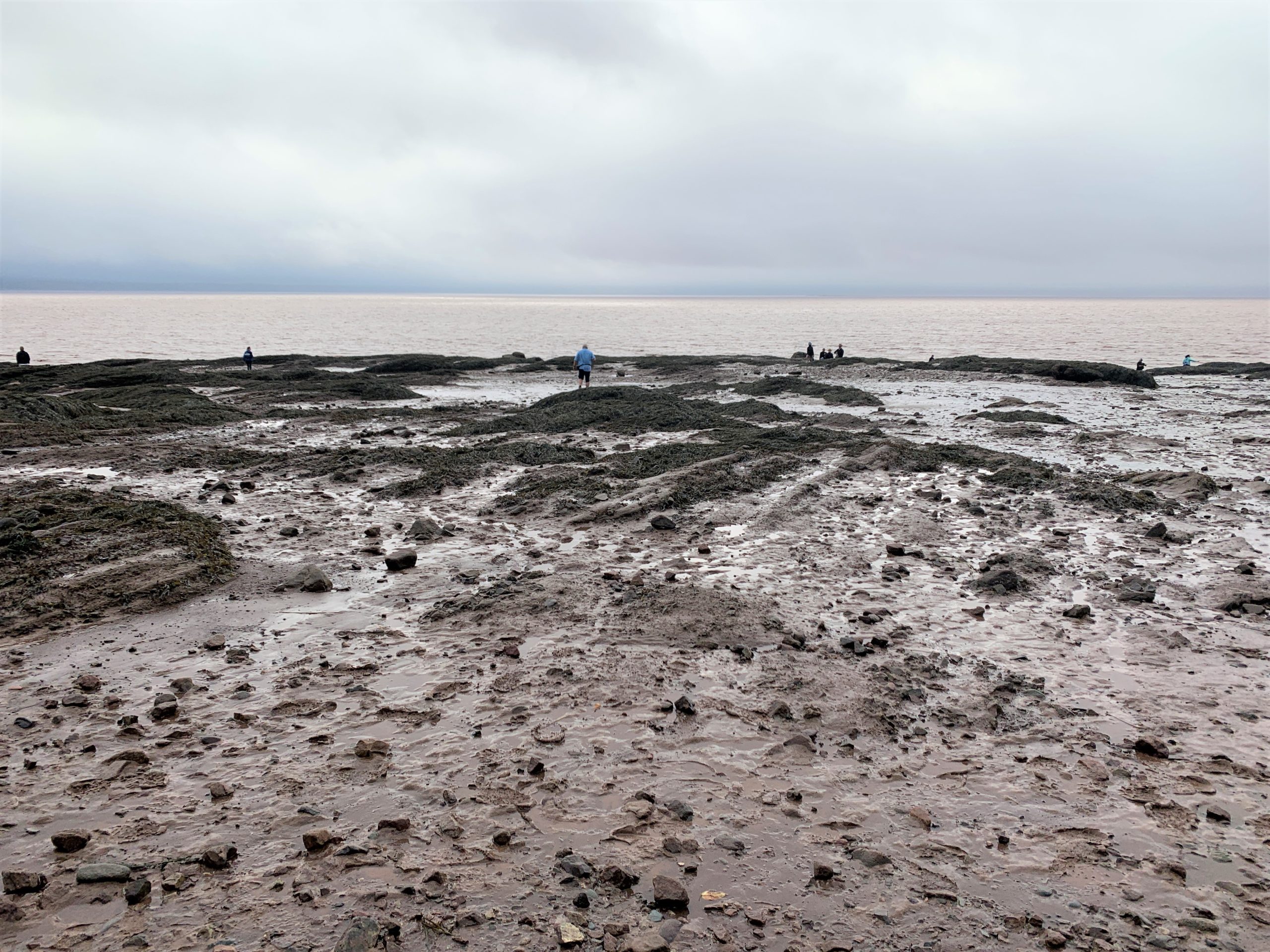In the final week of my seven-week holiday my friends and I close Nature’s Nest for the season and leave for new adventures in the neighbouring province of New Brunswick. I always feel sad to leave my beloved spot but happy with the thought that I can return again next year.
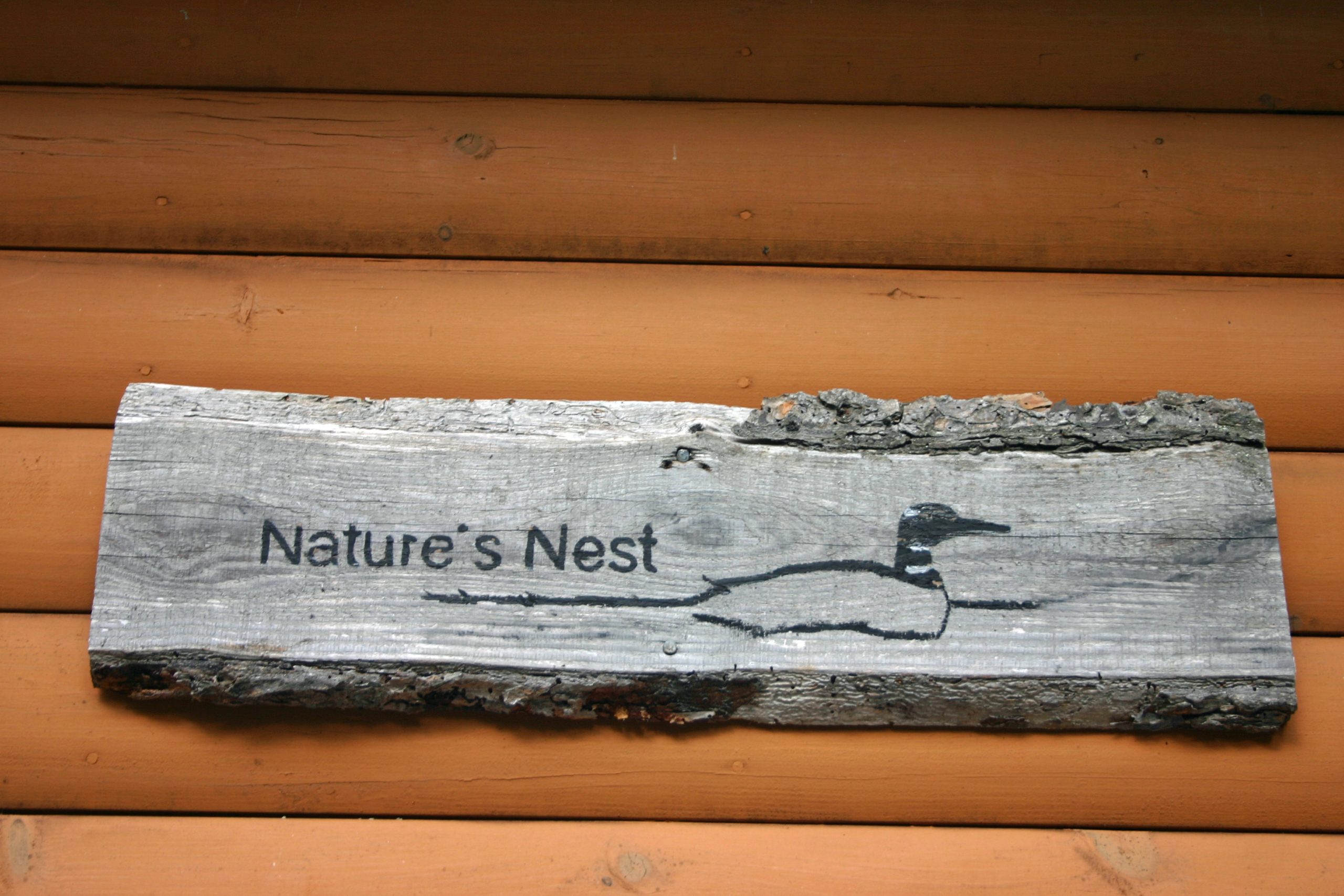
Our plan is to visit two national parks in New Brunswick, namely Fundy National Park (left) and Kouchibouguac National Park.
A fascinating feature of the area surrounding the Bay of Fundy in both Nova Scotia to the south and New Brunswick in the north are the tides. The Bay of Fundy has the highest tides in the world with a record-breaking 16 m difference having been observed. A billion tons of water slosh in and out of the bay twice daily, i.e. two high tides and two low tides with approximately six hour-intervals. Nature is amazing.
We see evidence of this fascinating phenomenon several places. One of the most spectacular is at Hopewell Rocks Provincial Park. Here so-called flower pots (or sea stacks), which consist of rock that has been eroded by the tides for aeons, are the main attraction.
At high tide they are tree-covered small islands scattered here and there in the water. At low tide, you can walk the ocean floor and look way up at these islands, whose flowerpot shape is now revealed. The difference in the water level between high tide and low tide is an astounding 14-16 m.
Another interesting tide phenomenon is tidal bores. These are created when incoming tide is squeezed into a narrow passage, such as a river, where it meets the river current on its way out to sea. The resultant wave is a tidal bore. We place ourselves by the Peticodiac River in Moncton, New Brunswick, at exactly 12:36 pm, which is when the tidal bore roars by. The incoming tide can raise the height of the river by 7.5 m, which in itself is pretty impressive, but the wave itself is most fun to watch. It only takes a few minutes, so you have to be on the spot at the right time. Have a look in the video:


